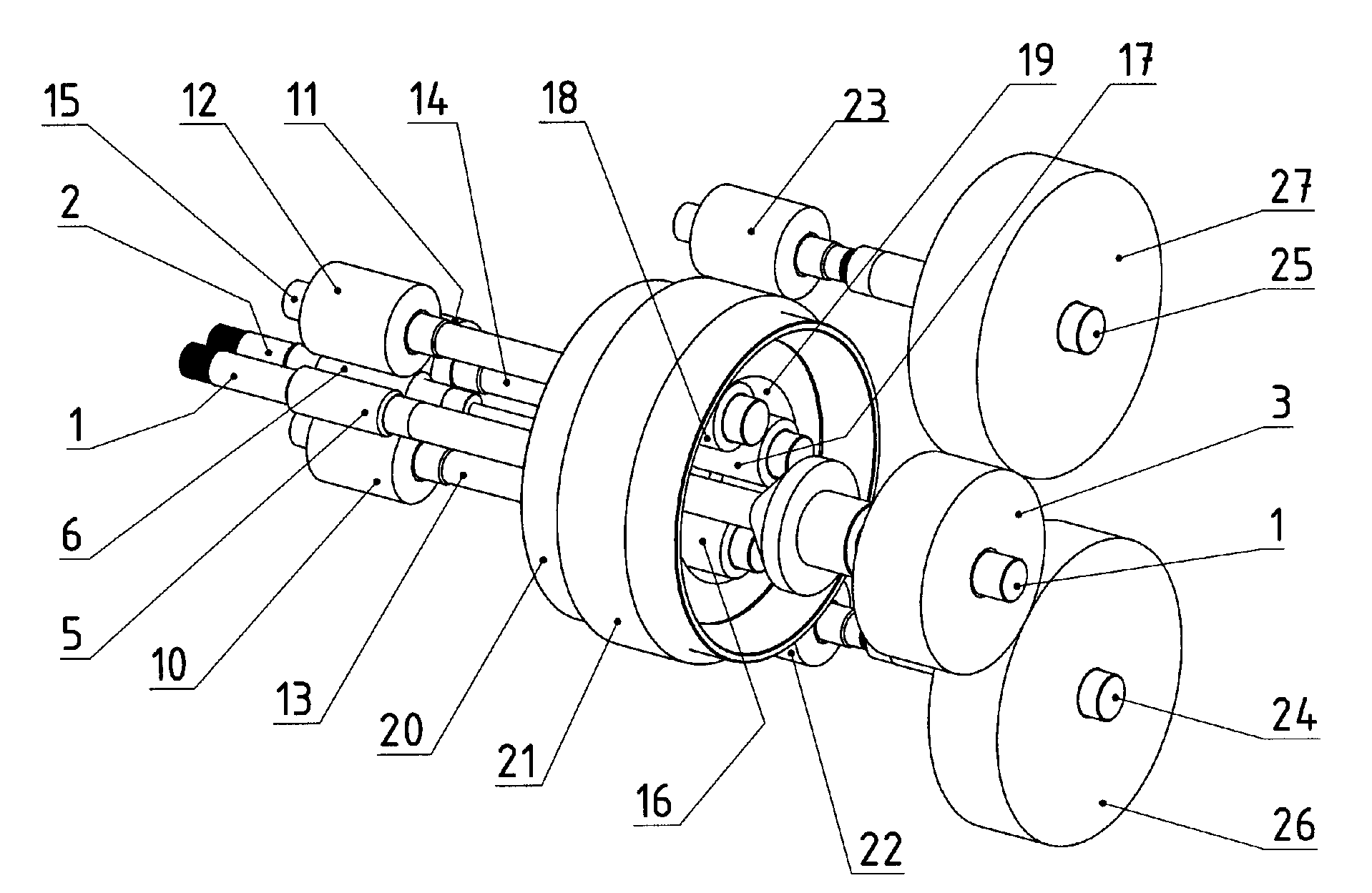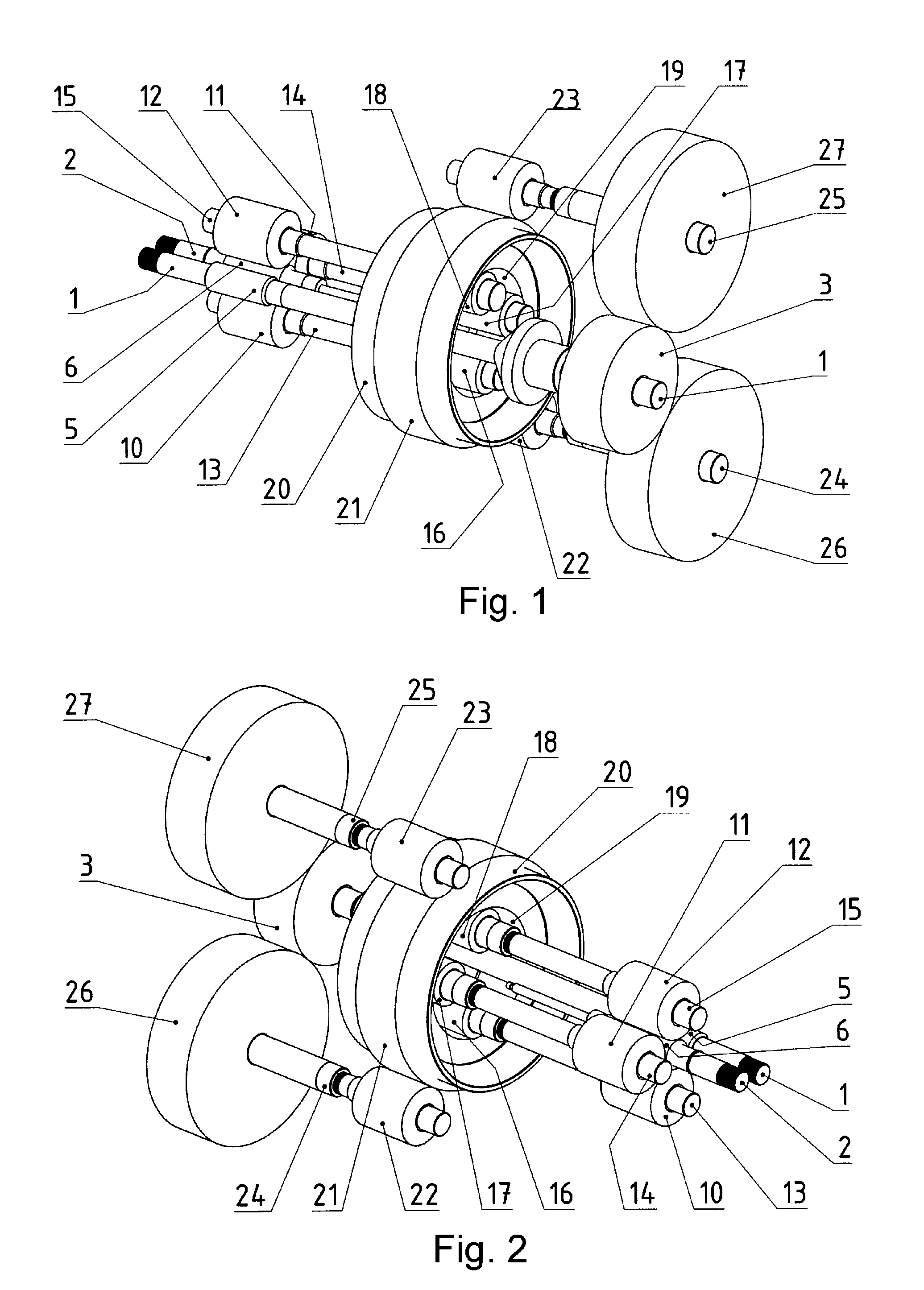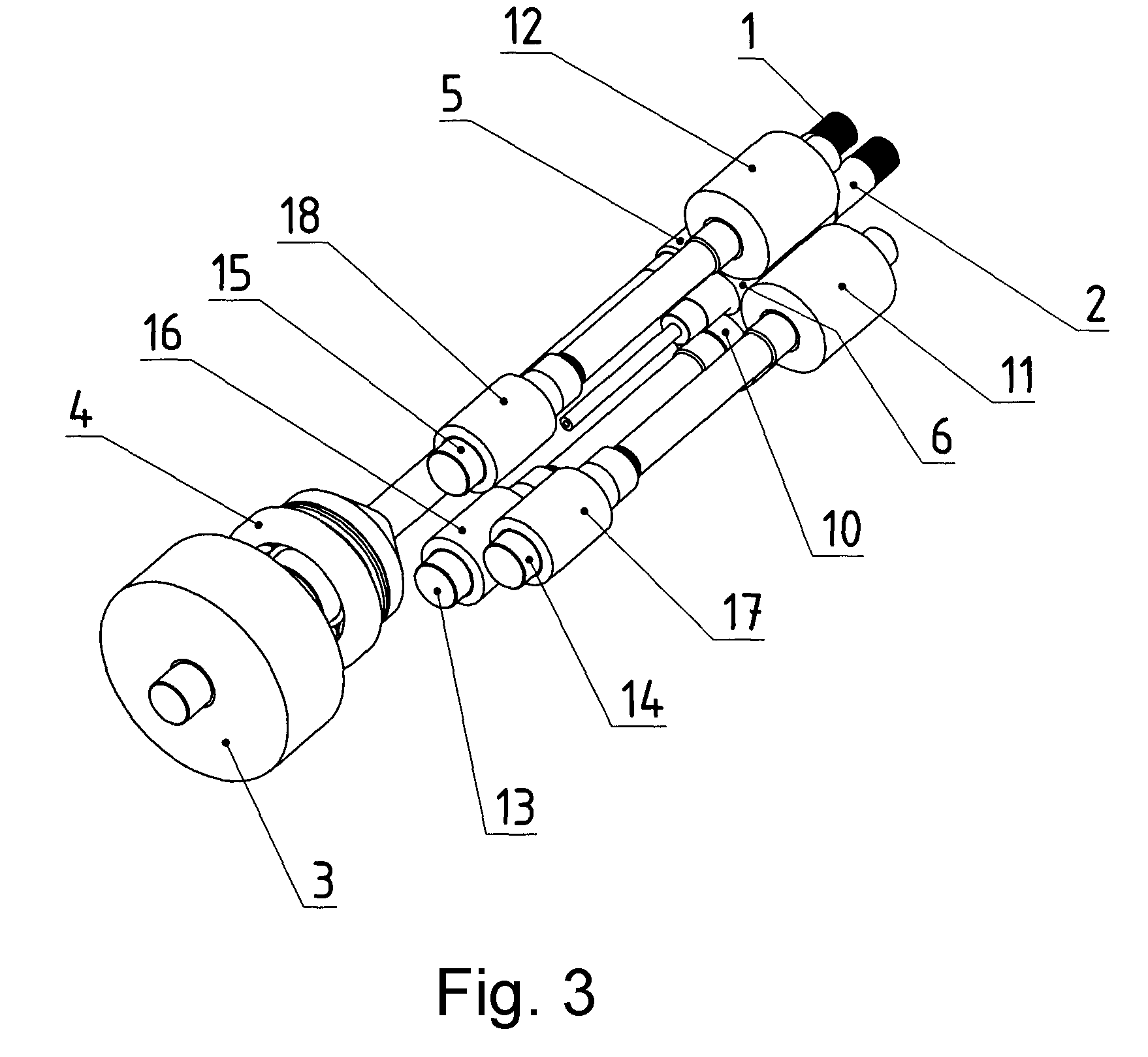Transmission for a Twin-Screw Extruder
a technology of twin-screw extruder and transmission device, which is applied in the direction of toothed gearing, belt/chain/gearing, gearing, etc., can solve the problems of affecting the performance of the gear, the teeth of the gear cannot be mitigated, and the gear with relatively small diameter can be placed
- Summary
- Abstract
- Description
- Claims
- Application Information
AI Technical Summary
Benefits of technology
Problems solved by technology
Method used
Image
Examples
Embodiment Construction
[0020]An input gear 3 is rotationally fixed on a long drive shaft 1, meshing with an unillustrated output gear of a motor, or the long drive shaft 1 is coupled directly with a drive motor. Furthermore, the long drive shaft 1 carries an axial bearing 4 and is rotationally fixed to an output gear 5 that meshes with a gear 6 rotationally fixed to a short drive shaft 2. The short drive shaft 2 also has an axial bearing 9. This is limited in diameter due to the closeness of the long drive shaft 1 and is preferably designed as a double bearing.
[0021]The output gears 5 and 6 have helical gear teeth. This helical gearing is selected such that the short drive shaft 2 is pushed toward the respective screw and thus the axial forces working on the bearing 9 of the short drive shaft 2 become proportionally smaller with rising torque. As a result, the axial forces on the long drive shaft 1 do increase, but this is not problematic since the axial bearing 4 can be made larger.
[0022]As can be seen f...
PUM
| Property | Measurement | Unit |
|---|---|---|
| Angle | aaaaa | aaaaa |
| Angle | aaaaa | aaaaa |
| Angle | aaaaa | aaaaa |
Abstract
Description
Claims
Application Information
 Login to View More
Login to View More - R&D
- Intellectual Property
- Life Sciences
- Materials
- Tech Scout
- Unparalleled Data Quality
- Higher Quality Content
- 60% Fewer Hallucinations
Browse by: Latest US Patents, China's latest patents, Technical Efficacy Thesaurus, Application Domain, Technology Topic, Popular Technical Reports.
© 2025 PatSnap. All rights reserved.Legal|Privacy policy|Modern Slavery Act Transparency Statement|Sitemap|About US| Contact US: help@patsnap.com



